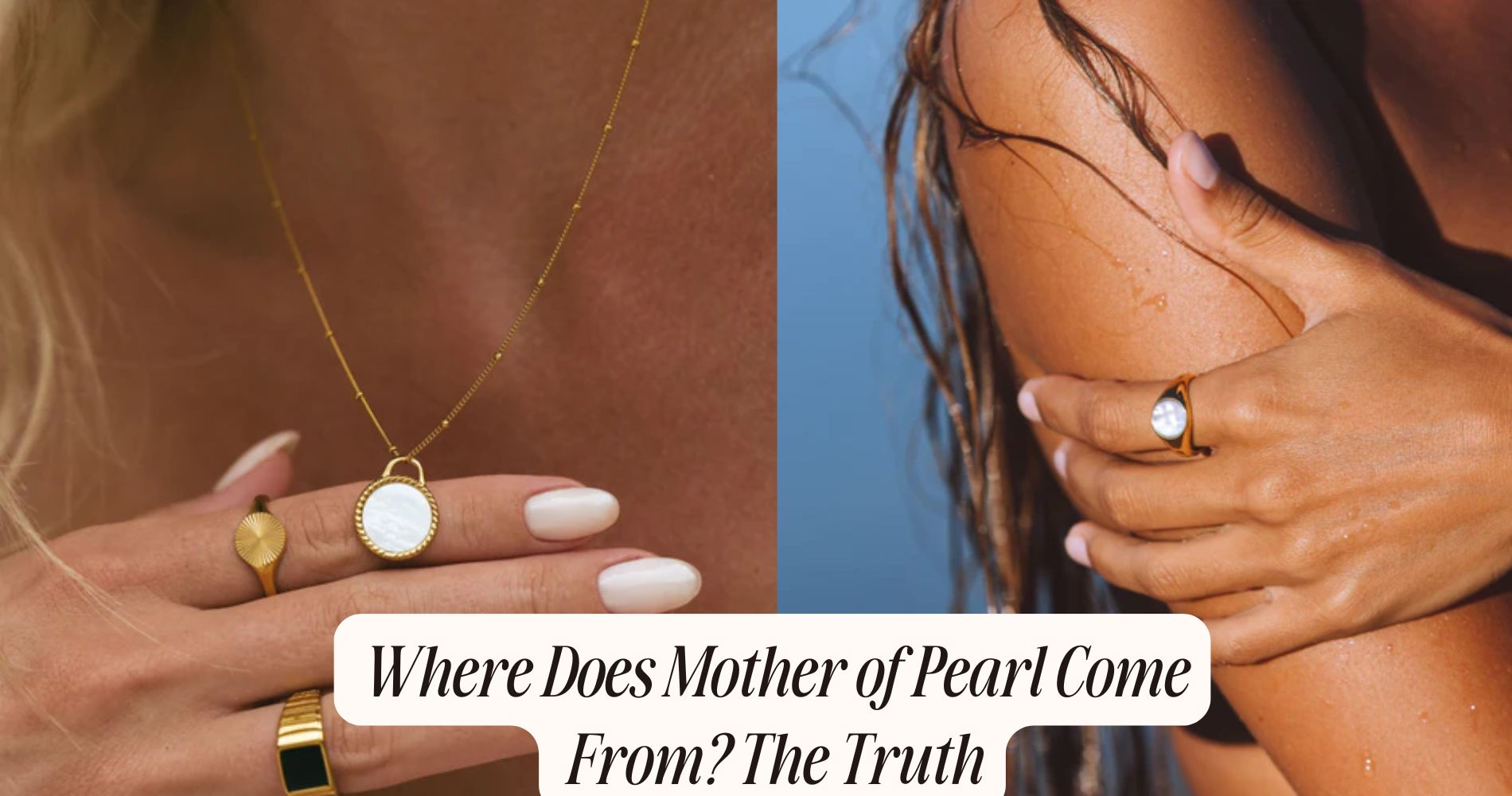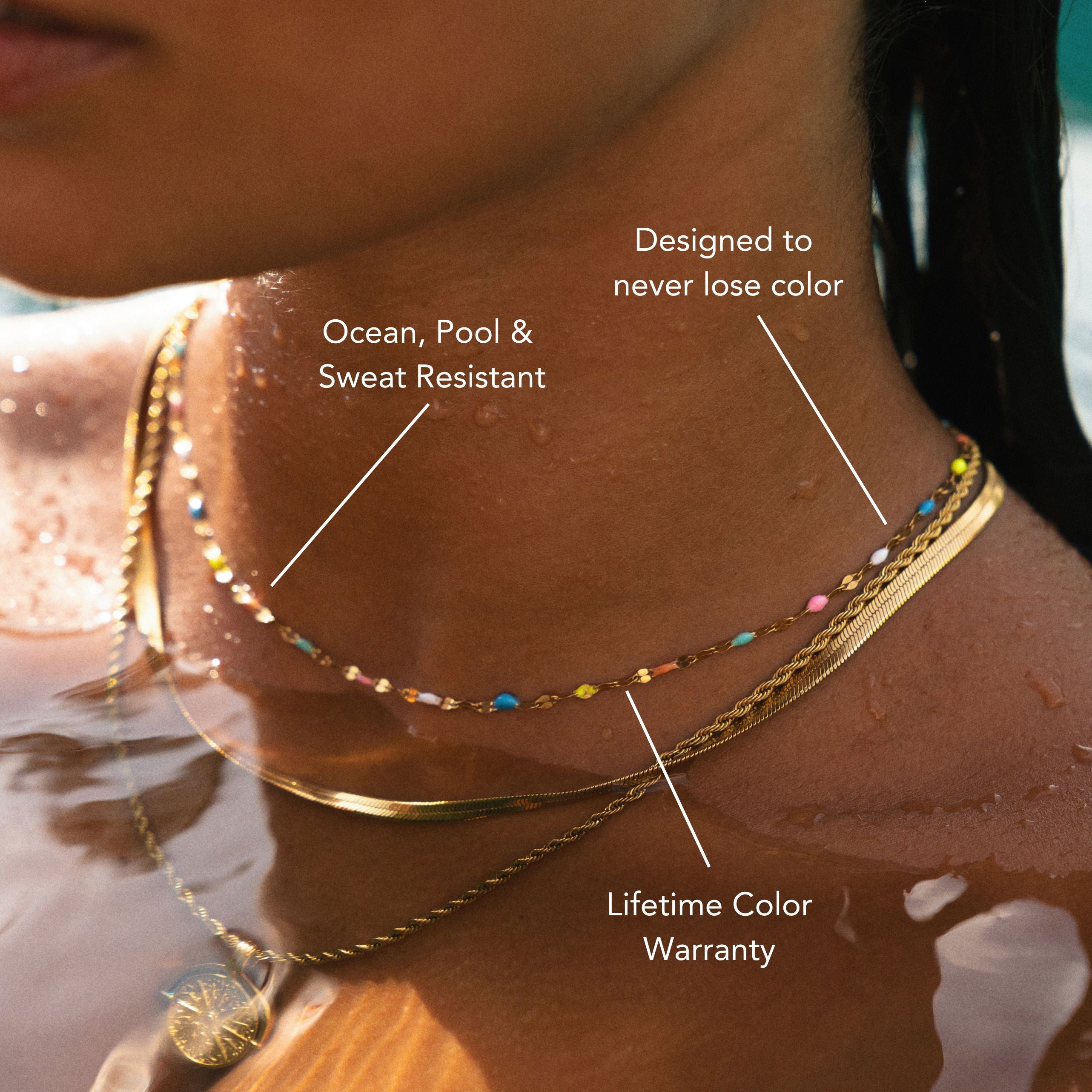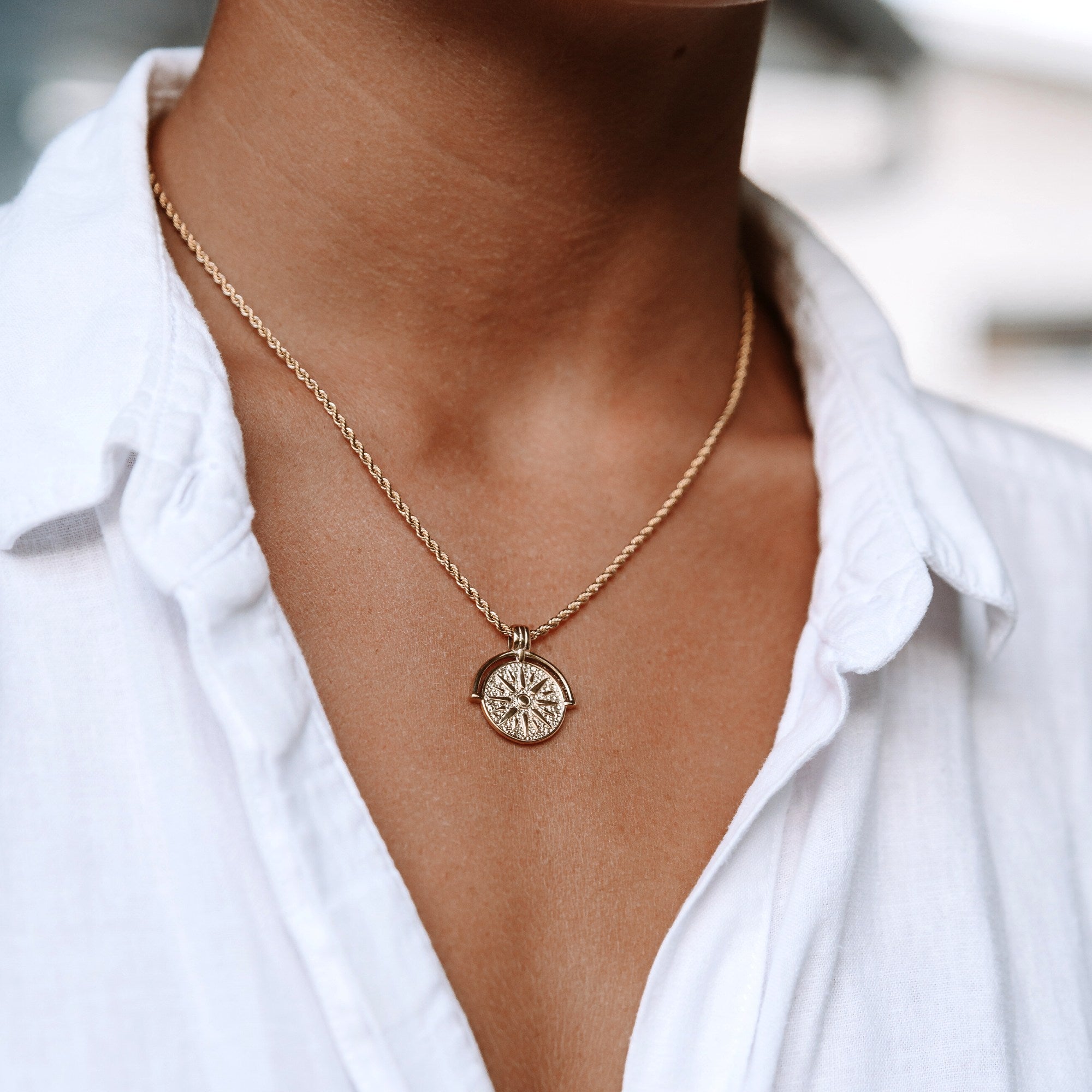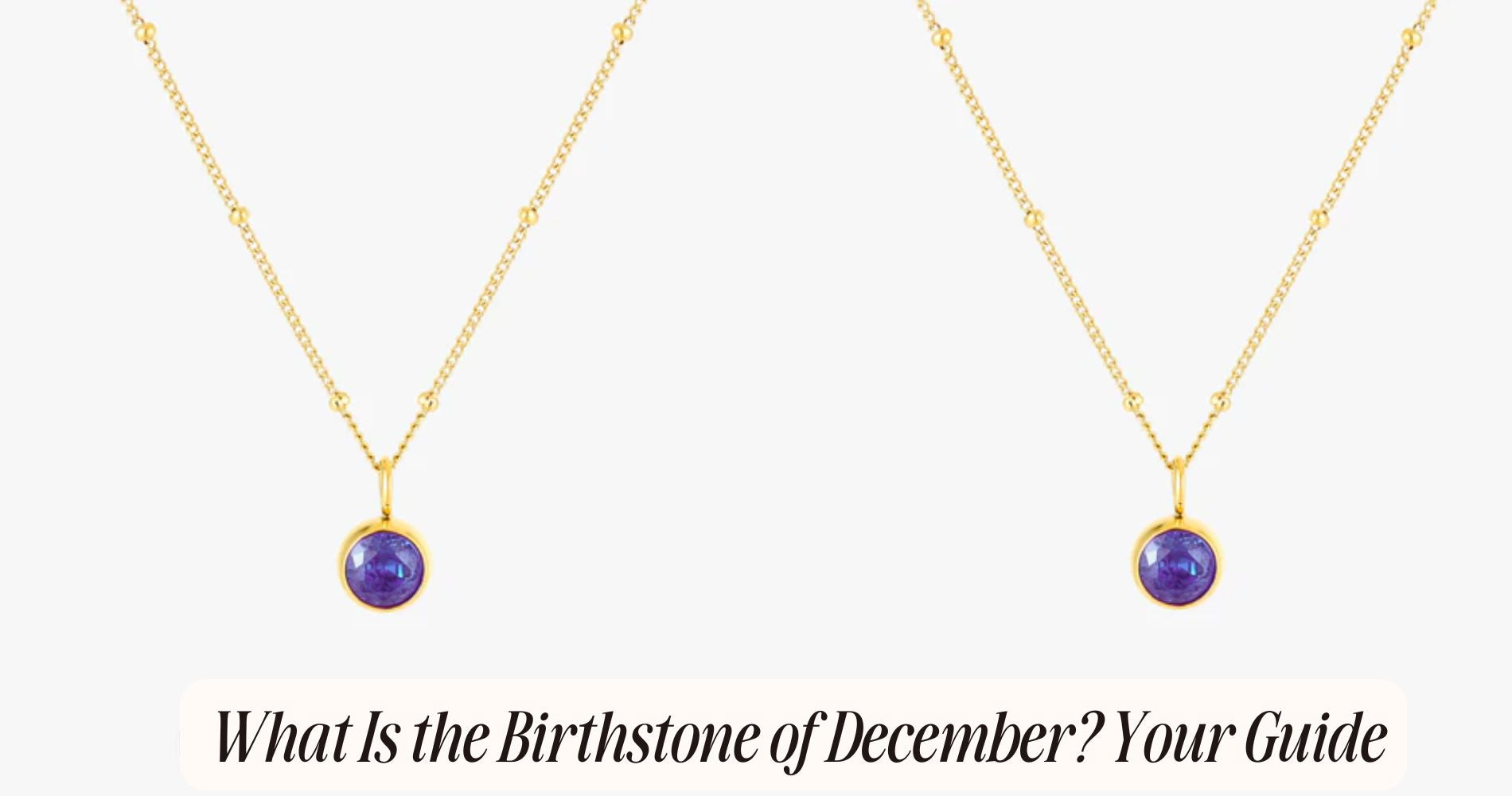
Where Does Mother of Pearl Come From? The Truth
Where does mother of pearl come from? Mother of pearl, known for its exquisite iridescence, comes from mollusks like oysters and freshwater mussels. These creatures secrete nacre, a composite of aragonite and organic materials, in concentric layers as a protective response to irritants. Over time, the thickness and composition of these layers create the lustrous sheen you appreciate. You'll find mother of pearl primarily in warm tropical waters as well as in certain freshwater habitats. Sustainable harvesting guarantees its availability while minimizing environmental impact. Understanding this process not only enriches your appreciation but also highlights the importance of responsible sourcing initiatives for its continued use and conservation. Explore more through our Freshwater Pearls Jewelry collection.
What Is Mother of Pearl?
Mother of pearl, also known as nacre, is an organic-inorganic composite material produced by certain mollusks, primarily oysters and some types of freshwater mussels.
You'll find that mother of pearl properties are quite unique, as it consists of layers of aragonite (a form of calcium carbonate) and organic substances. This layered structure contributes to its remarkable strength and flexibility, allowing it to serve both protective and aesthetic functions within the mollusk.
The aesthetic appeal of mother of pearl is undeniable, often characterized by its iridescent sheen and rich array of colors—ranging from soft whites to deep blues and greens.
These colors emerge from light interference within the layered structure, making it a sought-after material in jewelry and decorative arts. Its durability further enhances its desirability, as it resists damage better than many other natural materials.
In applications such as inlays, buttons, and musical instruments, mother of pearl not only adds beauty but also reflects craftsmanship.
Types of Mollusks
When exploring types of mollusks, you'll encounter several common species that contribute to the formation of mother of pearl.
Understanding their habitats and distribution is essential, as these factors influence their availability and the quality of the nacre they produce.
Common Mollusk Species
Mollusks, a diverse group of invertebrates, play an essential role in marine ecosystems and are key sources of mother of pearl. Understanding common mollusk species, like oysters, mussels, and abalones, reveals their significance in both ecological roles and the production of nacre.
These species exhibit unique mollusk anatomy, characterized by a soft body, a muscular foot, and a mantle that secretes the iridescent layer we recognize as mother of pearl.
Oysters are especially notable for their ability to filter water, improving water quality and providing habitat for other marine organisms.
Mussels, on the other hand, form dense beds that stabilize substrates and create ecosystems for various marine life.
Abalones, prized for their colorful shells and culinary value, also contribute to coastal ecosystems by grazing on algae.
Each of these mollusk species not only contributes to biodiversity but also impacts nutrient cycling within their habitats.
Habitat and Distribution
Understanding the habitat and distribution of various mollusk species is key to grasping how these organisms thrive in diverse environments. Mollusks occupy a wide range of habitats, from intertidal zones and coral reefs to deep ocean floors and freshwater lakes. Each species has adapted to specific conditions, influencing its morphology and behavior. For instance, bivalves like clams often inhabit sandy or muddy substrates, which facilitate burrowing and feeding.
Mollusk habitats are essential for their survival and play significant ecological roles. They contribute to nutrient cycling, as herbivorous mollusks graze on algae and other plant materials, while predatory species help regulate populations of other marine organisms. This balance maintains ecosystem stability.
Additionally, mollusks serve as important indicators of environmental health; their presence or absence can signal changes in water quality.
Distribution patterns of mollusks are influenced by factors such as salinity, temperature, and food availability. By understanding these patterns, you can appreciate the interconnectedness of mollusks within their ecosystems and the importance of conserving their habitats.
This knowledge is fundamental for effective management and protection of marine biodiversity, ensuring the longevity of these fascinating organisms.
The Formation Process
Mother of pearl, also known as nacre, forms through a meticulous biological process involving mollusks. This process starts with the mollusk secreting layers of aragonite or calcite, combined with organic proteins, during the nacre production.
As a response to irritants like sand or parasites, the mollusk initiates the formation stages by depositing these materials in concentric layers around the irritant.
Over time, these layers build up and create a lustrous coating—nacre—that serves both protective and structural purposes. The secretion process is regulated by specialized cells in the mollusk's mantle.
These cells are critical as they determine the composition and thickness of each nacre layer, influencing its eventual appearance and properties.
In essence, nacre production is a continuous cycle as the mollusk grows, with new layers forming atop older ones. This process can take years, resulting in the beautiful, iridescent mother of pearl that you see in jewelry and decorative items.
Understanding the formation process highlights the intricate relationship between biology and the creation of these stunning natural materials.
Harvesting Techniques
When it comes to harvesting mother of pearl, various techniques have evolved to secure both efficiency and sustainability. One prominent method involves the use of specialized tools that minimize damage to the surrounding marine ecosystem.
Divers trained in sustainable harvesting practices are essential; they collect nacre from mollusks while making certain the species' population remains stable.
Another technique focuses on ethical sourcing, which emphasizes the importance of acquiring mother of pearl from well-managed fisheries or farms. By adhering to strict guidelines, you can help guarantee that the harvesting process doesn't deplete local environments.
Aquaculture has also emerged as a viable alternative, allowing for controlled cultivation of mollusks, which further enhances sustainable practices. This method not only provides a reliable supply of mother of pearl but also reduces the pressure on wild populations.
Incorporating technology, such as underwater drones, aids in monitoring the health of marine habitats and the efficiency of harvesting practices.
Geographic Sources
Across various regions around the world, mother of pearl is sourced from specific mollusks that inhabit both freshwater and marine environments. The primary mollusks producing this iridescent substance include oysters and certain types of freshwater mussels. These creatures thrive in diverse oceanic ecosystems, where their ability to produce nacre contributes to their survival and protection.
Geographical distribution plays an essential role in the availability of mother of pearl. In marine environments, you'll find key sources in the warm, shallow waters of the tropics, particularly in the Indo-Pacific region. Countries like Japan, Australia, and the Philippines are notable for their abundant oyster species that yield high-quality mother of pearl.
On the other hand, freshwater sources, such as rivers and lakes, are mainly found in regions like North America and parts of Asia, where specific freshwater mussels are harvested for this material.
Understanding these geographic sources not only highlights the relationship between the mollusks and their habitats but also emphasizes the importance of sustainable practices in managing these valuable resources. As you explore the origins of mother of pearl, consider how these factors intertwine with the ecological balance of their environments.
Environmental Impact
The harvesting of mother of pearl can greatly impact the ecosystems where these mollusks reside. Unsustainable practices often lead to habitat destruction, disrupting the delicate balance of marine environments. When you remove large quantities of mollusks, it not only affects their population but also the species that rely on them for food and shelter.
Furthermore, pollution effects exacerbate these issues. Contaminants in water can weaken mollusk populations, making them more vulnerable to overharvesting.
As you consider the implications of mother of pearl sourcing, it's essential to recognize the need for conservation efforts. These strategies aim to protect habitats and promote sustainable harvesting methods that minimize environmental damage.
Ethical sourcing is becoming increasingly important in the industry. By choosing products that adhere to sustainability standards, you can help mitigate the negative impacts of harvesting. Supporting businesses that prioritize responsible practices fosters a healthier ecosystem, ensuring that mollusks can thrive for future generations.
Ultimately, awareness of these environmental impacts empowers you to make informed choices that contribute to the preservation of marine life and habitats.
Uses of Mother of Pearl
Mother of pearl serves multiple purposes across various industries, showcasing its versatility.
In jewelry and accessories, it adds a luxurious touch, while in home décor, it enhances aesthetic appeal through unique designs.
Additionally, its application in musical instrument inlays not only improves sound quality but also elevates the instrument's visual charm.
Jewelry and Accessories
Utilizing mother of pearl in jewelry and accessories elevates both aesthetic appeal and tactile experience. This natural material, often sourced from shellfish, boasts a unique iridescence that captures light in enchanting ways, making it a favorite among designers.
In today's jewelry trends, mother of pearl is increasingly favored for its versatility; it can seamlessly shift from casual to formal settings.
When you consider accessory styles, mother of pearl can enhance everything from earrings and necklaces to bracelets and watch faces. Its lightweight nature allows for comfortable wear, while its resilience guarantees longevity in everyday use.
Additionally, the organic textures and colors of mother of pearl provide a sophisticated contrast to metallic elements, creating a balanced visual appeal.
In recent trends, you might notice a rise in mixed-material designs, where mother of pearl is combined with gemstones, leather, or metal. This fusion not only amplifies the aesthetic but also caters to a broader range of consumer preferences.
As you explore your options, consider how mother of pearl can add a unique touch to your jewelry collection, aligning with contemporary styles while maintaining timeless elegance.
Home Décor Elements
Incorporating mother of pearl into home décor elements brings a touch of sophistication and natural beauty to various settings. This versatile material can serve as an excellent choice for home accents, enhancing both modern and traditional interiors. Its iridescent quality allows it to interact uniquely with light, creating a dynamic visual appeal that can elevate your design inspiration.
You might consider using mother of pearl in decorative items like vases, picture frames, or wall art. Each piece showcases individual variations in color and texture, ensuring that your home remains distinctive.
Additionally, mother of pearl inlays on furniture or cabinetry can transform ordinary pieces into stunning focal points, adding depth and luxury to your space.
Furthermore, the use of mother of pearl can create a sense of harmony and balance within your décor. Pair it with complementary colors and materials, such as wood or metal, to achieve a cohesive look.
Musical Instrument Inlays
In the domain of musical instruments, mother of pearl inlays serve not only as decorative accents but also as indicators of craftsmanship and quality. When you examine stringed instruments like guitars, ukuleles, or violins, these inlays enhance the visual appeal, contributing greatly to their musical aesthetics. The shimmering surface of mother of pearl catches light beautifully, creating a fascinating effect that elevates the instrument's overall look.
However, it's not merely about aesthetics; the application of mother of pearl is a proof of the instrument craftsmanship involved. High-quality inlays are meticulously cut and fitted, showcasing the artisan's skill. This labor-intensive process reflects a commitment to excellence, which discerning musicians appreciate.
Moreover, the choice of mother of pearl can influence the instrument's perceived value. Instruments adorned with exquisite inlays often command higher prices and are sought after by collectors.
Consequently, the use of mother of pearl inlays is a fusion of beauty and quality, reinforcing the importance of both musical aesthetics and technical skill in the creation of fine musical instruments. By choosing instruments with mother of pearl inlays, you're investing in artistry that resonates through both sight and sound.
Cultural Significance
Mother of pearl, also known as nacre, holds a rich cultural significance that transcends mere aesthetics. Across various cultures, it embodies deep cultural symbolism, often representing purity, beauty, and protection. In many indigenous societies, mother of pearl has been revered as a sacred material, believed to possess spiritual properties that connect the physical and spiritual domains.
You'll find that mother of pearl plays a crucial role in artistic expressions as well. Artisans have utilized it to embellish everything from jewelry to intricate carvings, creating pieces that reflect the cultural heritage and craftsmanship of their communities. The iridescent quality of nacre serves not only as a visual delight but also as a metaphor for transformation—a concept deeply ingrained in many artistic narratives.
In East Asian cultures, for example, mother of pearl is frequently associated with the ocean's bounty and the cyclical nature of life. Its incorporation into traditional crafts underscores a connection to nature and the importance of preserving that relationship.
Consequently, mother of pearl stands as a symbol of cultural identity, bridging the gap between art, spirituality, and the environment.
Care and Maintenance
Caring for mother of pearl requires attention to its unique properties to assure its longevity and beauty. This organic material, formed from the inner layer of certain shells, is sensitive to harsh chemicals and physical abrasion.
When cleaning, avoid using abrasive materials or strong detergents. Instead, opt for gentle cleaning methods, such as a soft, damp cloth to remove dust and fingerprints. For a deeper clean, you can use a mixture of mild soap and water, but make sure you dry it thoroughly afterward to prevent moisture damage.
Storage tips are equally important. Keep your mother of pearl items away from direct sunlight, as prolonged exposure can fade its vibrant colors.
Store them in a soft pouch or a lined box to avoid scratches and collisions with other hard objects. Additionally, maintaining a stable humidity level in your storage environment will help prevent warping or cracking.
Future of Mother of Pearl
As you consider the future of mother of pearl, sustainable sourcing practices will play a critical role in its viability.
Market demand trends indicate a growing consumer preference for ethically sourced materials, which may influence production methods.
Additionally, exploring alternative materials could reshape the industry, prompting innovation in design and usage.
Sustainable Sourcing Practices
Sourcing practices for mother of pearl are evolving to prioritize sustainability, ensuring that the beautiful material can be enjoyed for generations to come.
You'll find that ethical harvesting methods are becoming increasingly important, focusing on minimizing environmental impact and promoting marine biodiversity. This shift emphasizes the need for responsible sourcing from mollusk populations that are managed sustainably, allowing them to thrive without over-exploitation.
Eco-friendly practices are gaining traction among suppliers, who are now adopting techniques that reduce bycatch and habitat disruption. For instance, some companies are implementing aquaculture systems that cultivate mollusks in controlled environments, thereby alleviating pressure on wild populations.
This approach not only secures a steady supply of mother of pearl but also supports local ecosystems.
Furthermore, transparency in the supply chain is vital. You'll want to look for brands that openly share their sourcing methods and adhere to international sustainability standards.
By choosing products made from sustainably sourced mother of pearl, you're contributing to a more responsible industry that values both the beauty of the material and the health of our oceans.
It's a win-win for you and the environment.
Market Demand Trends
There's a growing interest in mother of pearl across various industries, driven by its unique aesthetic and versatile applications. As you observe the market, you'll notice that consumer preferences are shifting towards more sustainable and ethically sourced materials. This trend is partly a response to heightened environmental awareness, impacting how brands position their offerings.
Market fluctuations play an essential role in shaping demand for mother of pearl. When economic conditions are favorable, luxury goods incorporating this material often see increased sales. However, during economic downturns, the focus may shift towards more affordable alternatives. This volatility means that businesses must remain agile, adapting to changing consumer preferences while also considering the ethical implications of sourcing.
Furthermore, the rise of e-commerce has broadened the accessibility of mother of pearl products, allowing niche markets to flourish. As artisans and manufacturers leverage online platforms, you'll likely see innovative uses of mother of pearl emerging, particularly in jewelry and home decor.
Therefore, staying informed about these trends is essential for anyone involved in the market, as understanding the dynamics of demand can lead to better strategic decisions.
Alternative Materials Exploration
Exploring alternative materials is essential in the evolving landscape of the mother of pearl market, especially as sustainability becomes a focal point for consumers and manufacturers alike. As you consider the future, you'll notice that synthetic alternatives are gaining traction. These lab-created materials can mimic the lustrous appearance of natural mother of pearl while reducing environmental impact.
Companies are investing in research to develop these synthetic options, which often outperform traditional materials regarding durability and cost-effectiveness.
Additionally, several eco-friendly options are emerging, such as biodegradable composites and bio-based resins that integrate natural fibers, providing a sustainable approach to design without sacrificing aesthetic quality.
Moreover, the shift toward these alternatives meets the growing consumer demand for responsible sourcing. By opting for synthetic or eco-friendly materials, you're not only addressing ethical concerns but also aligning with a larger movement toward sustainability.
As the market adapts, understanding these alternatives will be vital for both consumers and manufacturers. The future of the mother of pearl market may very well hinge on your willingness to embrace these innovative solutions that prioritize ecological integrity without compromising style.
Frequently Asked Questions
Can Mother of Pearl Be Synthesized Artificially?
Yes, mother of pearl can be synthesized artificially. While natural sources provide unique qualities, researchers are developing synthetic alternatives that mimic its properties, offering potential applications in various industries like jewelry and technology.
Is Mother of Pearl Hypoallergenic for Sensitive Skin?
Mother of pearl isn't typically hypoallergenic; it can cause skin reactions in some people. If you have sensitive skin, consider testing small jewelry options first to guarantee you don't experience any adverse reactions.
How Does Mother of Pearl Compare to Other Gemstones?
When comparing mother of pearl to other gemstones, you'll notice its unique beauty attributes, like iridescence. However, in value comparison, it often falls short against more precious stones, highlighting its distinct appeal and affordability.
Are There Any Ethical Concerns in Mother of Pearl Sourcing?
You should consider ethical concerns in mother of pearl sourcing, particularly regarding sustainable harvesting practices. Ensuring these practices supports ocean conservation efforts and minimizes environmental impact, aligning your choices with responsible and ethical consumption standards.
What Are Common Misconceptions About Mother of Pearl?
You might think mother of pearl's only value lies in its beauty, but myth debunking reveals its deep cultural significance. Many overlook its historical uses, from jewelry to art, showcasing its broader importance across cultures.
Conclusion
In conclusion, mother of pearl, derived from various mollusks, showcases a fascinating formation process that reflects both nature's artistry and human ingenuity. Its diverse geographic sources and applications highlight its cultural significance and economic value. As you explore the uses of mother of pearl, consider the importance of sustainable harvesting and proper care to preserve its beauty. With growing awareness, the future of mother of pearl holds promise, balancing ecological responsibility with continued appreciation for its unique qualities.
























Leave a comment
This site is protected by hCaptcha and the hCaptcha Privacy Policy and Terms of Service apply.